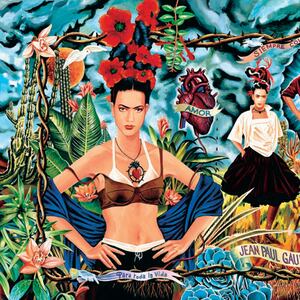PARIS—The champagne flowed until the early hours inside the Théâtre du Châtelet, where couture’s reigning showman, Jean-Paul Gaultier, bid farewell to his regulars this week with an extravagant runway show, peppered with French entertainers and top models.
British pop star Boy George hit the stage after the night’s entertainment wrapped with his 1980s hit “Church of the Poison Mind,” surrounded by a colorful sea of models, and Gaultier characters, decked in theatrical finery created by the designer who appeared dressed in his blue workman’s overalls to say goodbye.
After 50 years in fashion, the designer announced last week that this would be his last couture show. Now what, given that his couture runways have long been the most entertaining event of the twice-yearly couture shows?
Thankfully, couture, or the exclusive made-to-measure fashion world, is on the up. A few years back, it was almost dead on its feet. The Paris Couture Week schedule now fills four days to accommodate new talent that has emerged. Next season, Balenciaga, which is designed by an underground Georgian designer, Demna Gvasalia, will help fill the Gaultier gap by adding couture to its ready-to-wear remit.
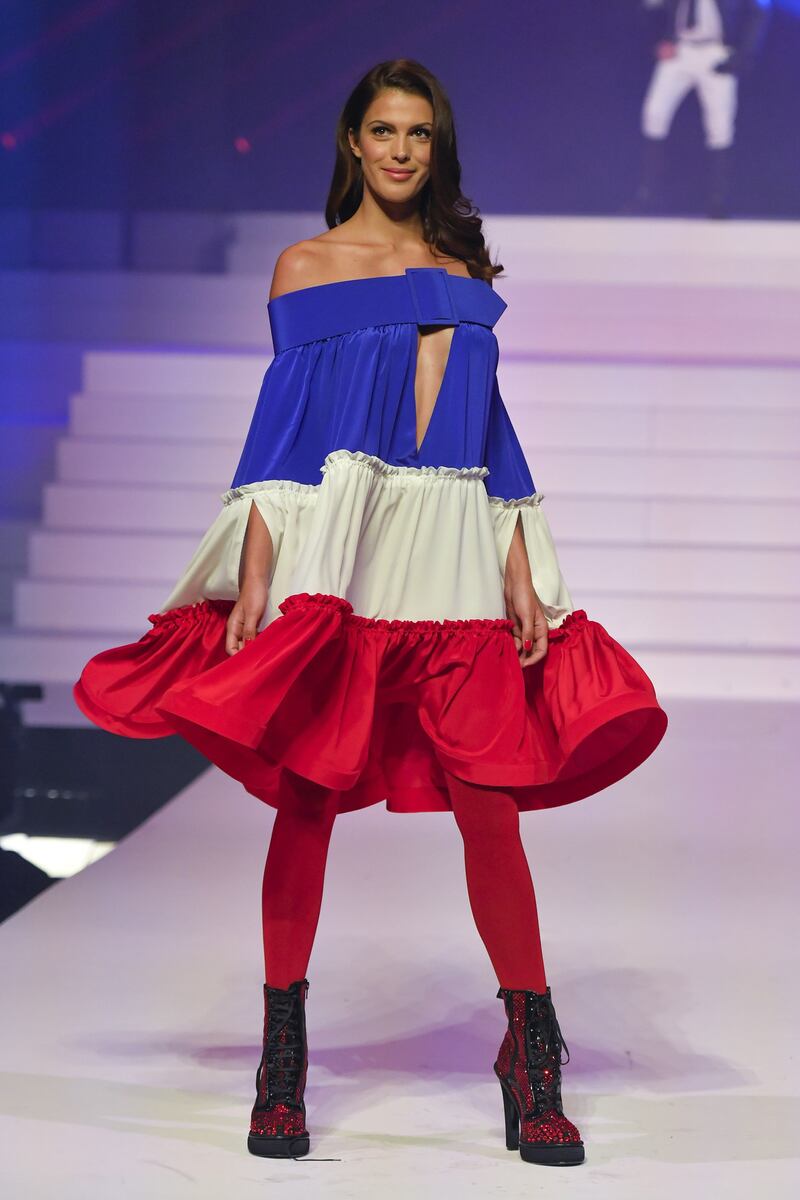
Jean-Paul Gaultier
Victor VIRGILE//Gamma-Rapho/GettyElsewhere about town, designers paraded their wares in slightly less extravagant fashion than Gaultier whose show lasted well over an hour, with the after-party running until 3 am.
The young French designer Julien Fournié let his Gothic- looking models walk through a famous church, the Oratorio du Louvre. Guests watched his romantic collection—inspired by female explorers—sitting on pews.
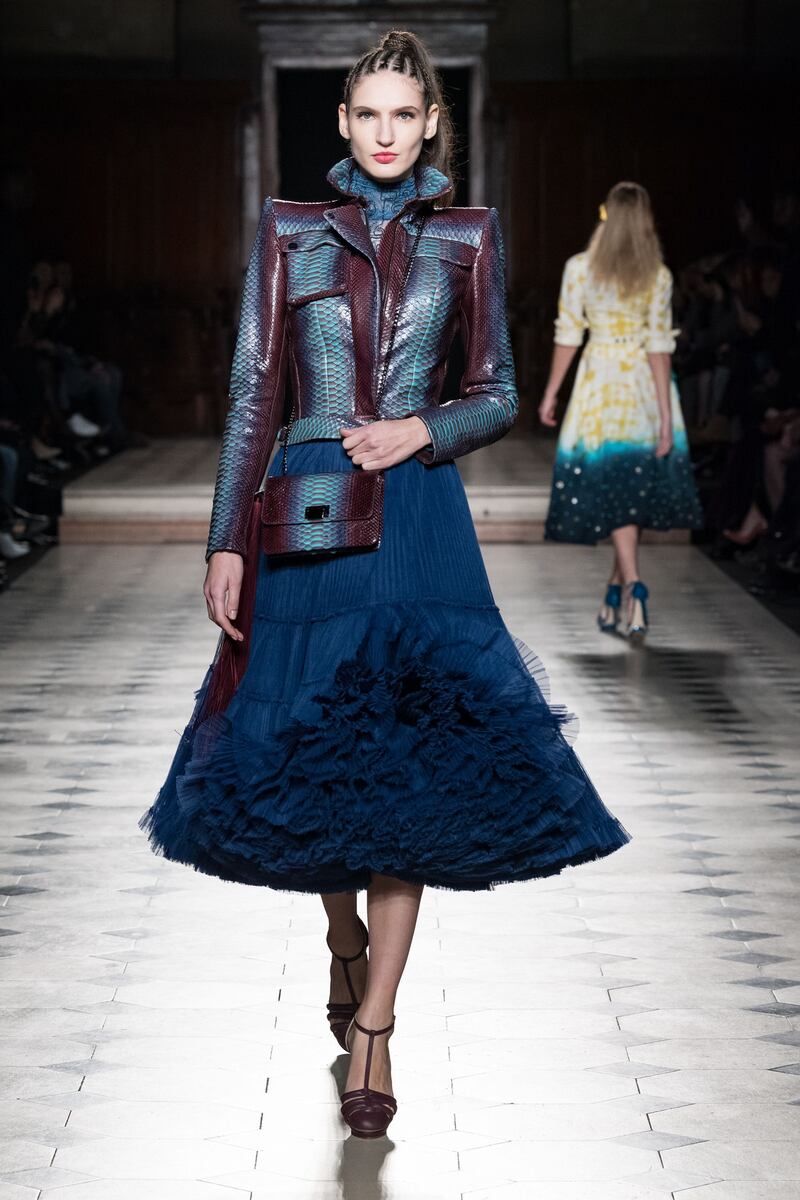
Julien Fournié
Yannis VlamosCouture designers can let their imagination run free. Chinese designer Guo Pei knows how to be OTT, like a Gaultier, and put on a good show. She deconstructed traditional Chinese costumes for her collection that brought to mind clowns, courtesans, and romantic Chinese ghosts decked in snowflakes and rich satins.
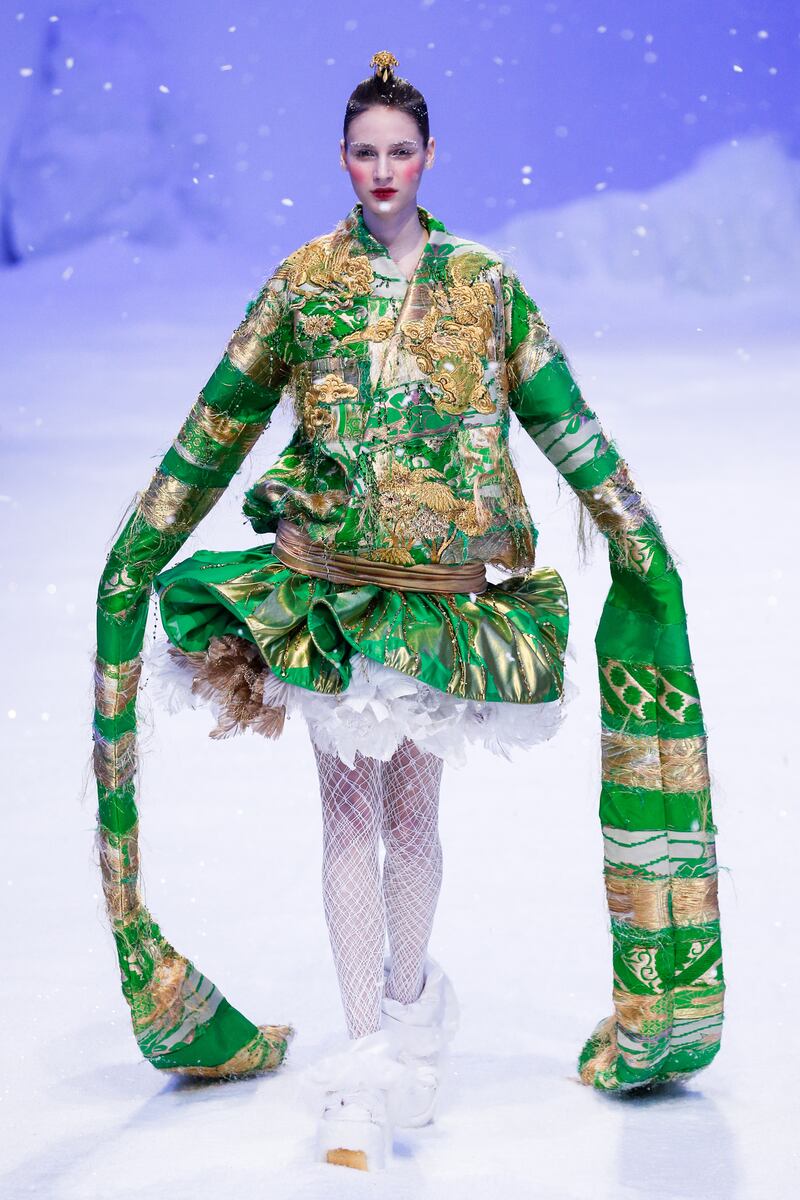
Guo Pei
Richard Bord/GettyGaultier’s show was a decidedly French affair with staff and models wearing riffs on his iconic sailor stripes, and a slew of French performers on stage. But Couture Week is becoming increasingly international.
India’s Rahul Mishra brought to Paris delicate hand embroidery created with the help of local villagers back home. One model looked like a walking leaf.
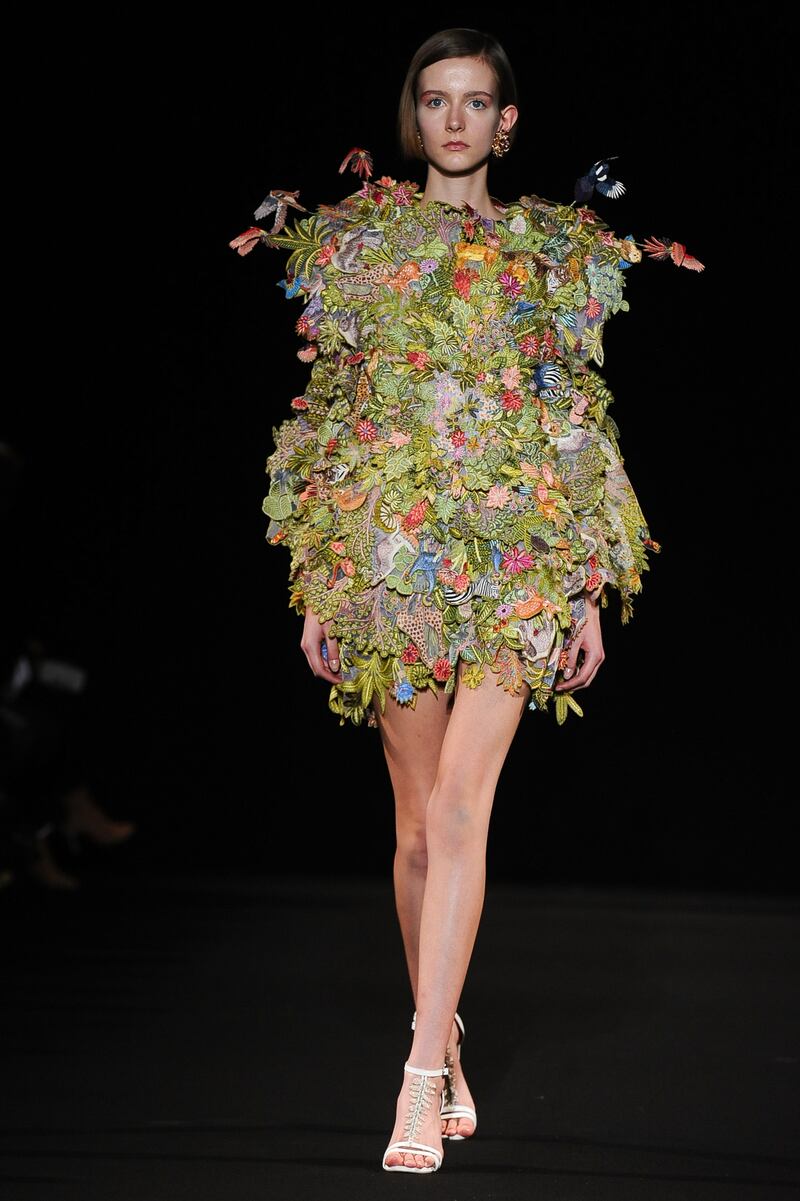
Rahul Mishra
Kay-Paris Fernandes/GettyJapan’s Yuima Nakazato proved that you can’t go wrong with Japanese fashion if you are looking for originality. Some models wore red flames on their heads, and outfits that looked like they were designed for another planet. They were made from futuristic materials.
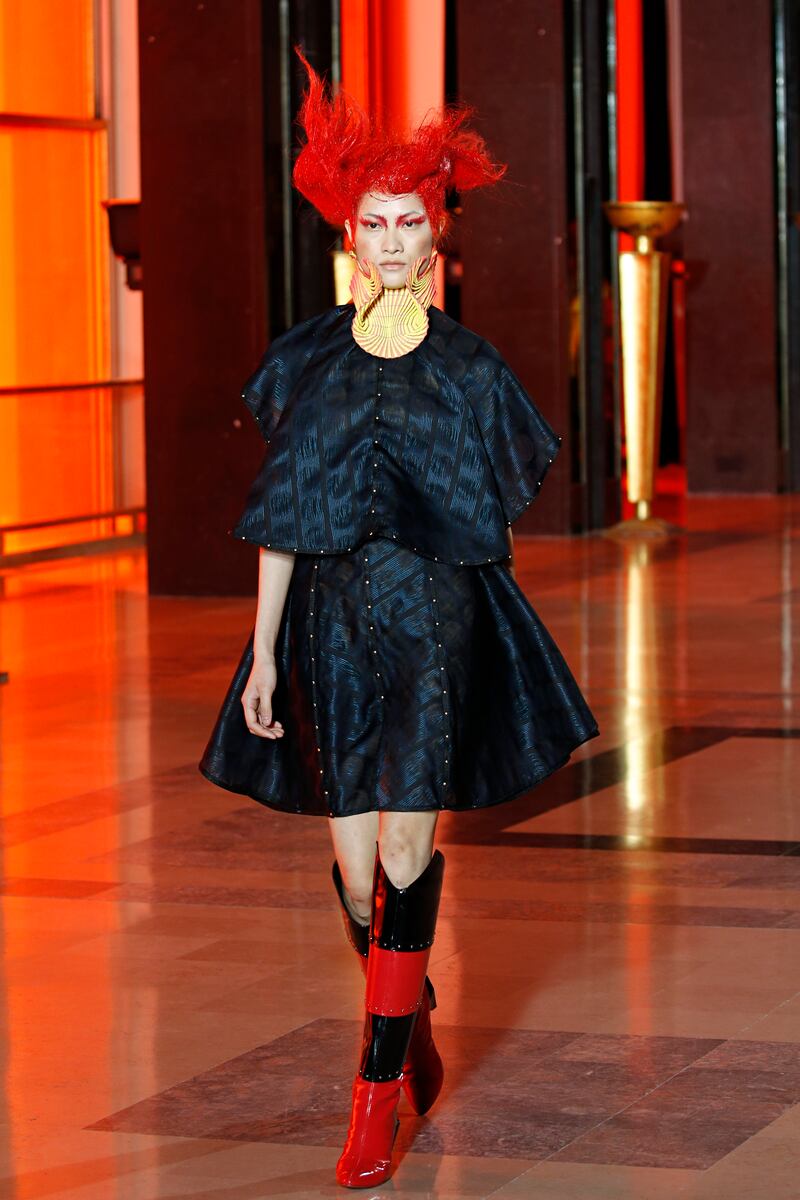
Yuima Nakazato
Richard Bord/GettyThe house of Schiaparelli is keeping the late designer’s surrealist vision alive. This season, designer Daniel Roseberry’s looks included a stiff cape in blue red and pink that resembled colorful angel’s wings designed for a children’s fancy dress party.
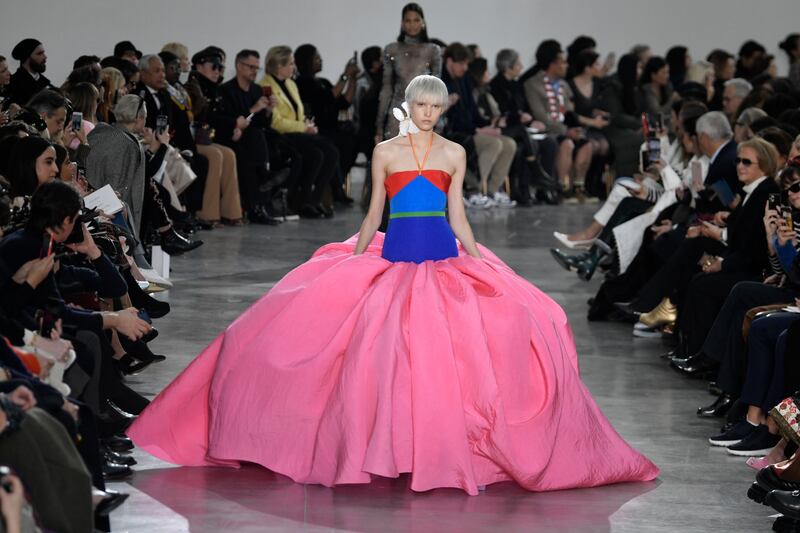
Schiaparelli
Xinhua News Agency/GettyDutch designer Iris van Herpen has been known to create materials that change color or even make sounds. This season, she created more of her beautifully crafted pieces that transformed the models into tropical fish.
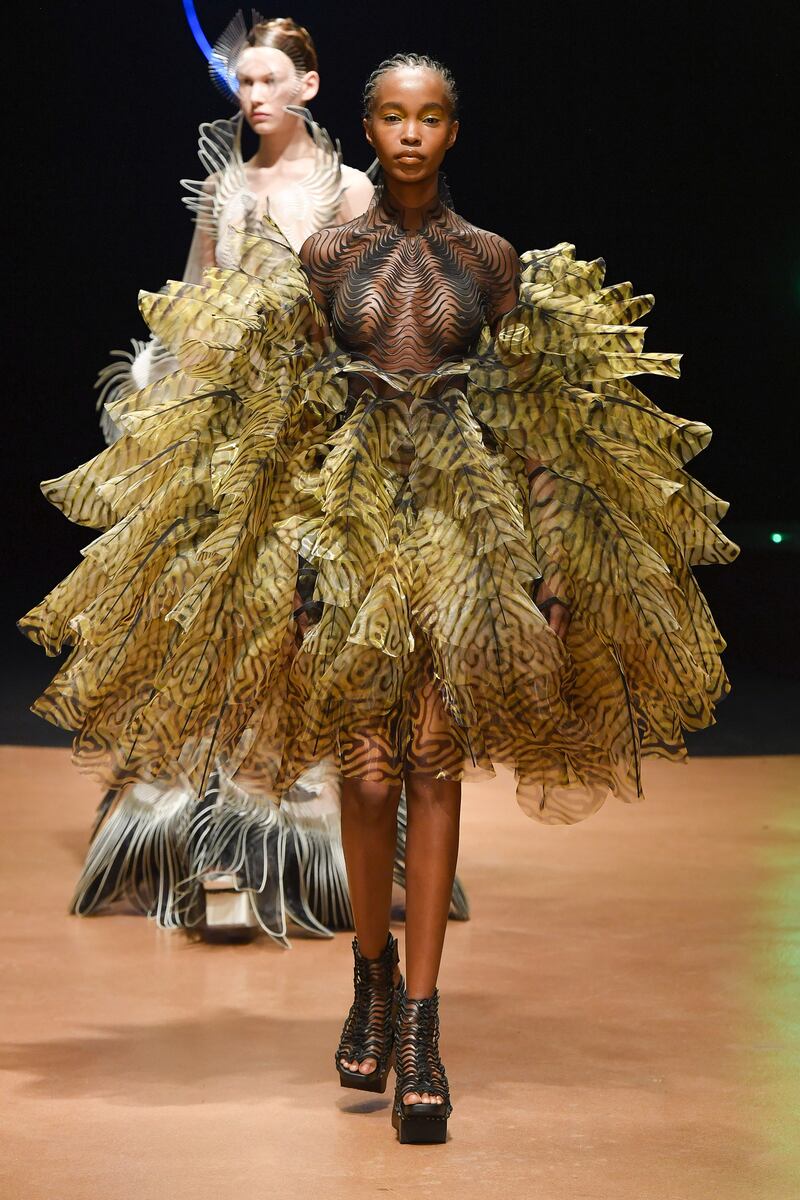
Iris van Herpen
Victor VIRGILE/Gamma-Rapho/GettyGiambattista Valli—a designer that can always be relied upon to create uber-voluminous dresses—held an exhibition of its collection. Each piece stood alone like a work of art.
Cult label Viktor & Rolf went in for patchwork materials, frills, lace and tattoos. Think Little House on the Prairie attempts rebellion.
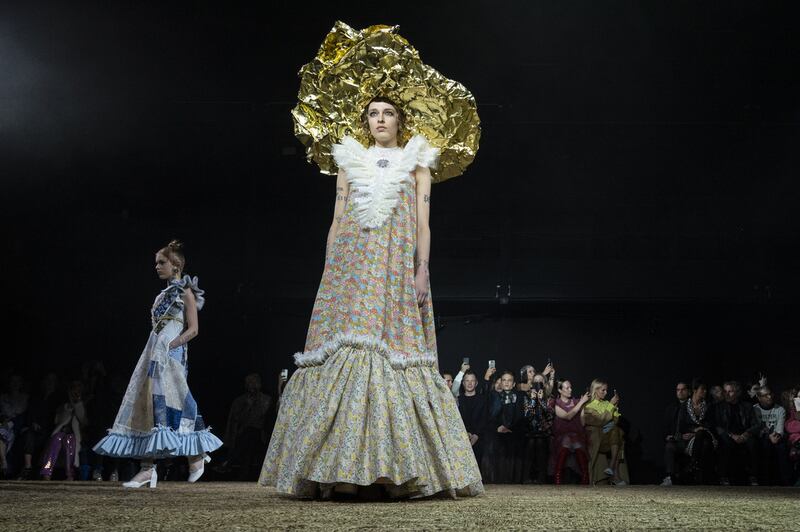
Viktor & Rolf
Peter White/GettyIndeed, tradition is often turned on its head by couture designers. Still some remains. A few shows still closed with a wedding gown, like Ralph & Russo whose show ended was a fluffy white dress that looked like it was made of white roses held in place by a faux diamond.
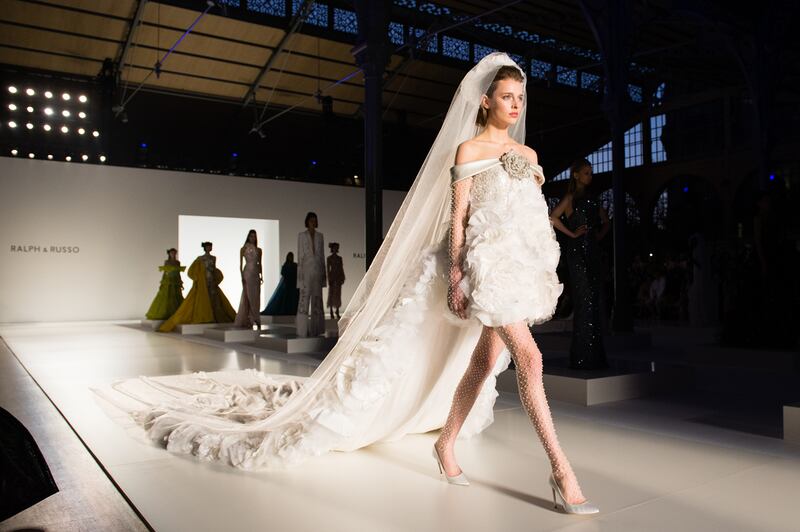
Ralph & Russo
Samir Hussein/GettyPresumably, the model dragging the gigantic train through the old Parisian market hall venue, where the show took place, was supposed to be a reminder of the drag of marriage. I prefer Gaultier’s drag any day. But where will we find it now?

